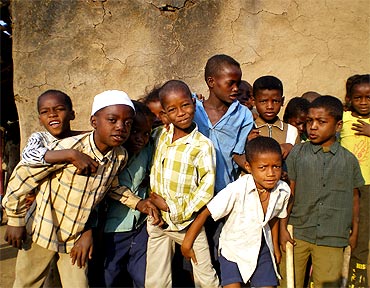Photographs: Vaihayasi Pande Daniel/Rediff.com Zoya Akhtar
I cannot recollect which part of Gujarat I was travelling in, but suddenly I saw women who looked African but were dressed in ghagra-cholis.
These, I was to learn, were women of the Siddi tribe.
I hadn't known about their existence till that day. It turned out that this tribe has been living in Gujarat for over 100 years! I was told that their forefathers were brought as slaves from Africa to work, and stayed back.
They looked African because of their features, but spoke impeccable Gujarati! I was quite fascinated by this, but was equally sad when I learnt that they aren't treated very well and live in poverty. It broke my heart.
Zoya Akhtar, who has just directed the hit movie, Zindagi Na Milegi Dobara, spoke to Abhishek Mande.
Abhishek Mande adds: The Siddi tribe is perhaps one of India's best-kept secrets. While the exact history of this tribe isn't known, it is largely believed that the first Siddis arrived on Indian shores somewhere between the 10th and 14th centuries on Arab slave ships.
Over the centuries, they adopted the local culture. Today, they speak Gujarati, dress and eat just like the locals. Their physical features are the only thing that distinguishes them from the rest -- they look distinctly African.
Anthropologists put their population between 20,000 and 30,000 and the government has granted them tribal status.
Besides Gujarat, the Siddis have also struck roots in parts of Karnataka and speak the local language. Some of them living in areas bordering Maharashtra like Belgaum speak Marathi.
The Siddis of Karnataka believe that US President Barack Obama shares their gene pool and wanted to gift him a bottle of honey during his last visit to India.


article